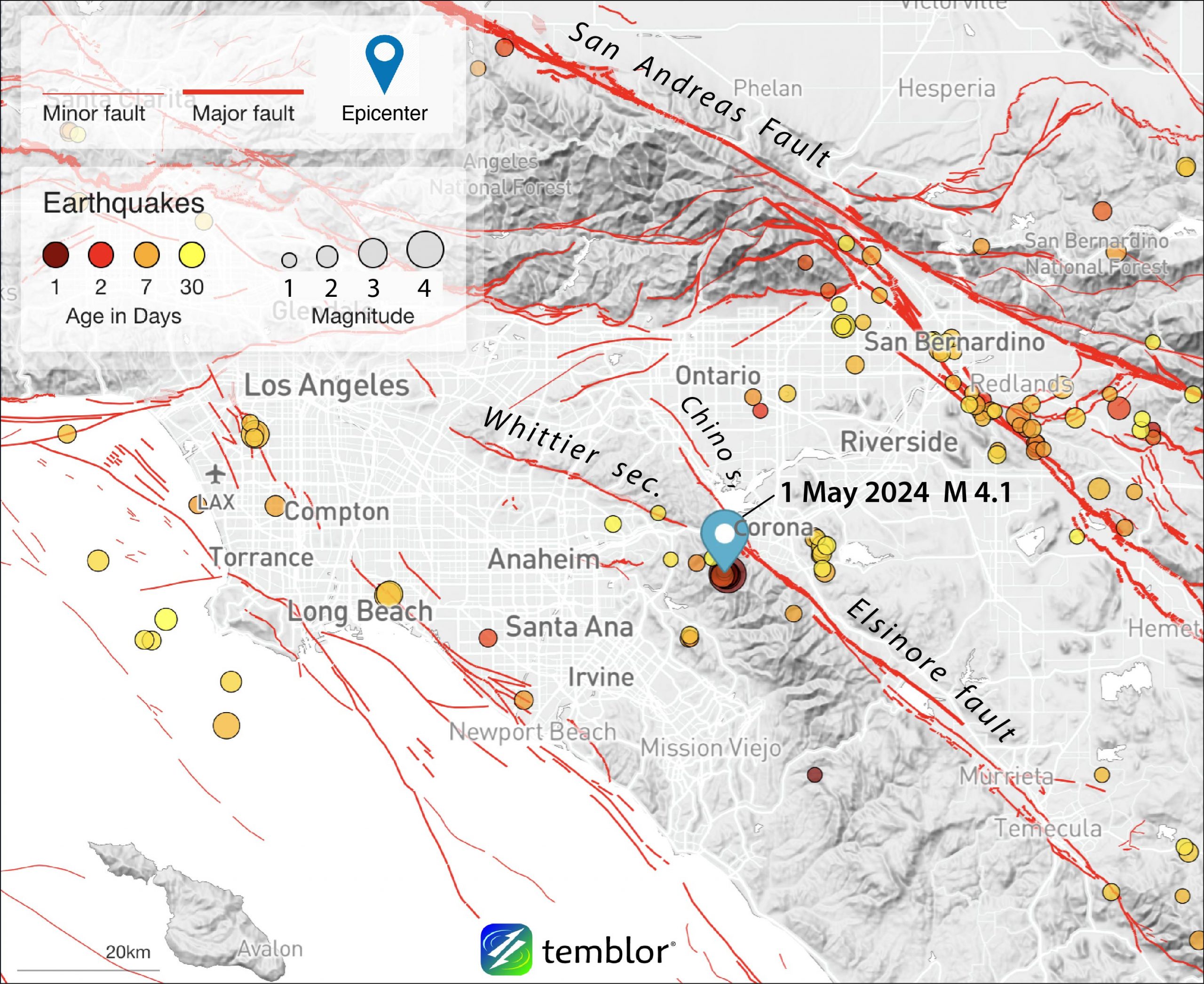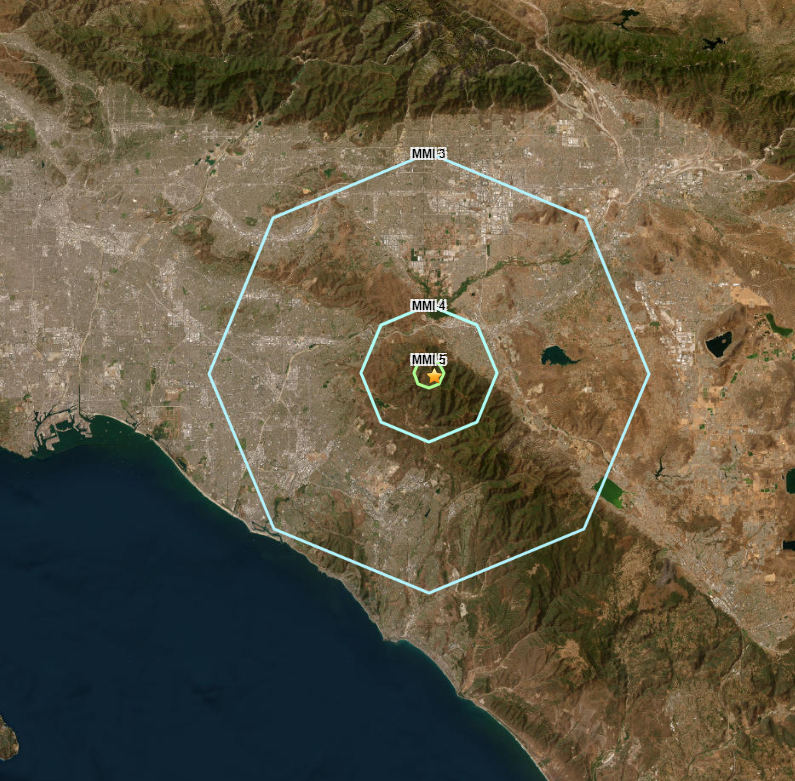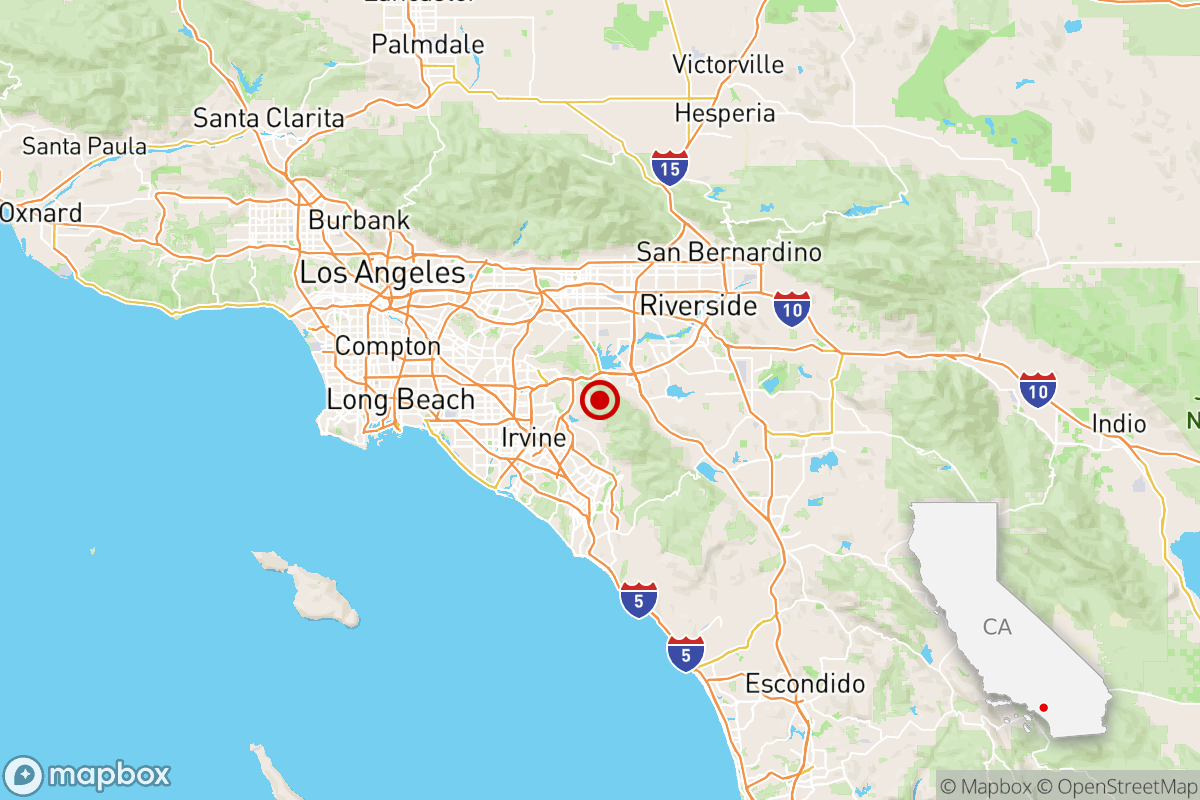- 2 May 2024
- 208
Magnitude 4.1 Earthquake Rattles Corona, California

On Wednesday, May 1, at 1:49 p.m. local time, residents were reminded of this reality when a magnitude 4.1 earthquake shook parts of the city and its surrounding areas. As the tremors are surrounded through neighborhoods, including Corona, Anaheim, and Santa Ana, locals experienced a momentary disruption, prompting reflections on the region’s geological landscape.
The Earthquake’s Impact
The epicenter of the earthquake was situated in the Santa Ana mountains, a few miles southwest of Corona. Despite its relatively modest magnitude, the tremor was widely felt across the Los Angeles Area due to its population density. Fortunately, the earthquake resulted in minimal damage, offering a sigh of relief to residents and authorities alike.

Activity in the Region
The recent earthquake is part of a broader pattern of seismic activity experienced in the area over the past month. The region, characterized by its complex network of fault lines, is no stranger to tremors. The earthquake struck close to the Elsinore fault, near the junction of the Glen Ivy (southeast), Whittier (northwest), and Chino (north) fault sections, underscoring the geological dynamics at play in Southern California.
Activation of ShakeAlert
One notable aspect of Wednesday’s earthquake was its activation of the ShakeAlert Earthquake Early Warning System. Designed to provide advance notice of events, ShakeAlert proved its efficacy by promptly detecting the earthquake. Although the initial automated estimate the magnitude at 4.5, subsequent human review confirmed it to be 4.1. This discrepancy highlights the importance of early warning systems in alerting residents to potential hazards.

Understanding ShakeAlert
Q1: What is the ShakeAlert Earthquake Early Warning System? A1: ShakeAlert is a system developed to provide advance warning of seismic activity. It is currently operational in California, Oregon, and Washington.
Q2: How does ShakeAlert work? A2: ShakeAlert detects seismic waves generated by earthquakes and sends alerts to users within affected areas, providing valuable seconds of warning before the shaking begins.
Q3: Who receives ShakeAlert alerts? A3: Individuals within designated alert zones, who have previously downloaded ShakeAlert-powered apps like MyShake, receive alerts on their cell phones. Android users within the designated alert zone also receive push notifications.
Effectiveness of Early Warning Systems
While ShakeAlert offers crucial seconds of warning to residents in California, the effectiveness of such systems varies depending on proximity to the epicenter. Residents closer to the epicenter may experience shaking before receiving alerts, whereas those further away may have more time to prepare. Despite its limitations, early warning systems play a vital role in enhancing preparedness and reducing the impact of seismic events.

